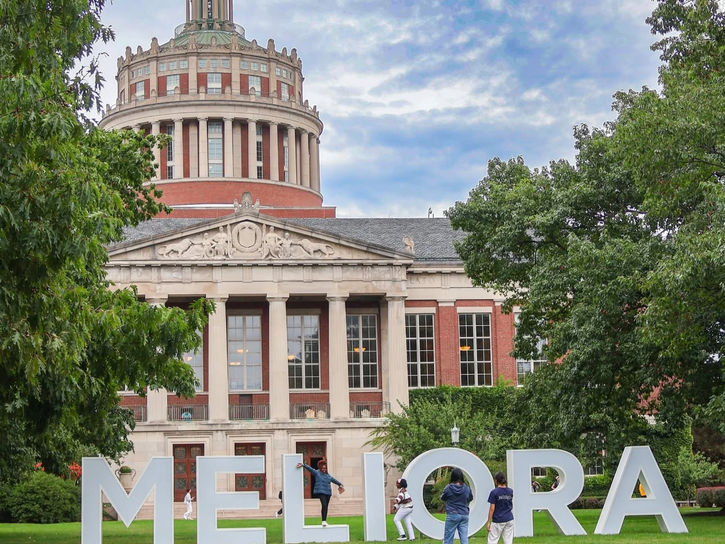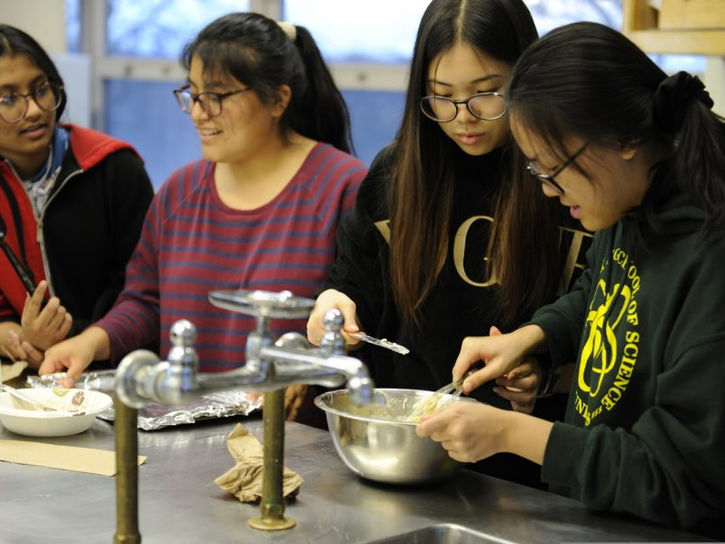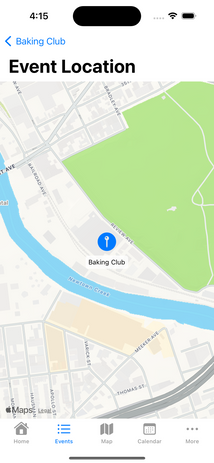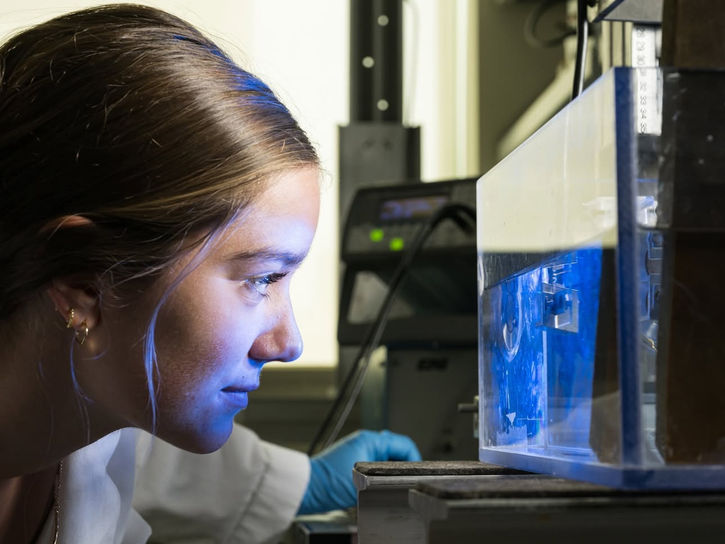
Connect UR Community
An interactive community events board to connect University of Rochester students to their community. Our board and app offers students an easier time in connecting with local events both University affiliated and not.
Connect UR Community features a community events board where clubs and other organizations may physically display posters to attract potential attendees. The board features a paired app, which students can download and log into using their UR ID. From there, students may sign up to see events from clubs they like, as well as get personalized recommendations for events based on their preferences. Events will appear on a calendar and map where students may easily navigate their schedules. Busy students may additionally plug in their class schedules and find events that fit in the gaps of their calendar. Using the app, students may buy tickets, or upload and print photos from events they went to. The Connect UR Community board features an ID swipe, a ticket printer, and a photo printer, so students may buy tickets or select photos to print from our app, and they will dispense at the physical location of the board. The back of the events board is a dedicated space to hang photos, so students may share the fun they had at an event! Students can choose to hang photos and take them home after a week, or they may just take them home. When attending an event, students will sign in using Connect UR Community. Students will gain points for their interactions with the community which they may eventually use to exchange for some voucher to the bookstore or some other campus affiliated store! Connect UR Community is exclusive to the undergraduate students of the University of Rochester and aims to offer easy access to on and off campus events for students, allowing students to form meaningful connections to their community in a fun and engaging manner.
 |  |
|---|
Hardware
Our design consolidates multiple hardware components, all encased in a kiosk-type stand. There is a bulletin board on each side of the kiosk; one for information, one for photos. The information bulletin is on the front, with the other hardware components, where students can post information about clubs, activities, and community events. The photo bulletin is on the opposite side. Under the information bulletin and to the left is a laser printer, which can print photos that students upload from the app. To gain access, they will use the ID swipe to the right of the bulletin, and then their photo can print. To the far right under the bulletin, there is a receipt/ticket printer, where students can get tickets through the app, then swipe their ID at the kiosk, and their ticket will print. All of these elements combined create a central hub for students to engage in community activities, be rewarded for doing so, and to share different aspects of student life with others.
The printer will be maintained by building facilities.
The main box is 50 in.x 32 in.x 22 in. The pillar under the main box is 14 in. x 14 in. x 8 in. The base of the stand is 30 in. x 22 in. and has a height of 10 in. The hex codes are 5CCAD5 for the main body color, 2D7691 for the printers and ID swipe, and D6B2CE for the bulletin boards. The ID swipe and printers are a dark shade of cyan, and the main body is a light shade of cyan.
Software
Number of Key Screens
The kiosk app has eight key screens:
-
Home Screen
-
Event Listing Screen
-
Event Details Screen
-
Search and Filter Screen
-
Interactive Map Screen
-
Calendar Integration Screen
-
User Profile & Saved Events Screen
-
Points Page

 | 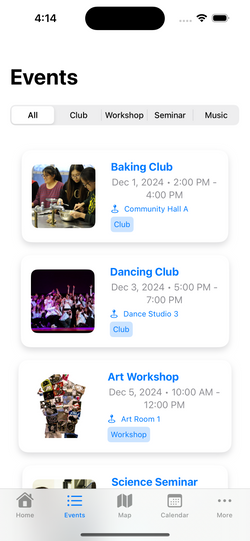 |  |  |
|---|---|---|---|
 |  |  |
Function of Key Screens
Home Screen
Purpose: Entry point with quick access to key features.
Features:
Dynamic welcome banner.
Buttons: "Explore Events," "Search Events," "View Map," "My Calendar," "Check My Points."
Navigation Bar at the bottom for quick access.
Interactive Element: Highlights "Top Events" and a user points summary preview.
Event Listing Screen
Displays event cards with options to view details or save events.
Allows sorting and dynamic filtering.
Users earn points for viewing or saving events.
Event Details Screen
Provides detailed event information.
Offers options to save, RSVP, or navigate to the venue.
Users earn points for:
Saving the event.
Sharing event details on social media.
Search and Filter Screen
Allows keyword searches and advanced filtering.
Points can be earned for conducting searches or saving search results.
Interactive Map Screen
Provides venue locations and directions.
Users earn points for:
Viewing locations.
Navigating to events.
Calendar Integration Screen
Displays user-synced events in a calendar format.
Users earn points for syncing events or completing attendance confirmations.
User Profile & Saved Events Screen
Displays saved events and preferences.
Tracks user activity, including point history.
Points Page
Purpose: Provides a detailed view of the user’s earned points and rewards.
Features:
Points Summary:
Total points earned.
Breakdown by activity type (e.g., saving events, attending events, completing feedback).
Rewards Section:
Redeemable items (e.g., discounts, event tickets, merchandise).
Progress bars showing how many points are needed for specific rewards.
Activity History:
Log of activities that earned points.
Interactive Elements:
"Redeem Now" button for eligible rewards.
"View Details" link for each activity.

Major Interface Elements:
Navigation Bar
Consistent across all screens with shortcuts to "Home," "Events," "Map," "Calendar," "Points," and "Profile."
Points Notifications
Small popups or banners appear after earning points (e.g., "You earned 5 points for saving an event!").
Redeemable Rewards Section
Consistent design for reward cards, showing images, descriptions, and "Redeem Now" buttons.
Interactive Progress Bars
Display user progress toward specific rewards or milestones.
Data Needs (Nouns)
User Activity Data:
Actions like saving events, attending, sharing, and feedback submissions.
Point System Data:
Point values assigned to each activity.
Total points earned and redeemed.
Reward Data:
Available rewards, point requirements, and redemption statuses.
System Data:
Notifications for point earnings.
Backend tracking for syncing points and rewards.
Calendar Data:
Attendance confirmations for events.
This enhanced framework integrates gamification, making the kiosk not just a tool but an engaging platform to encourage consistent user interaction.

The Point System & More
The point system encourages students to return to events and stay involved in the community by offering points for every activity a student attends. Students sign into an event using a QR code that an event leader will scan upon entrance. This also allows event organizations to keep track of attendance. Points are automatically added to a user’s account. From there, users can visit the points shop in the app, and choose a reward to exchange some amount of points for. Rewards range from photos, to bookstore vouchers, to more.
This app functions in tandem with physical features such as the ID swipe, photo printer, and ticket printer. Students will use the app to purchase tickets, or select photos to print, which they can then send to the events board, and print using their student ID. Another physical use of our app manifests itself in coupons and vouchers as rewards from the point system.
Visual Design
Links and embeds to fonts in CSS (obviously replace the uniquifiers with your own):
Title : Orbitron SemiBold 600
Headers : Rajdhani Medium 500
Details & Information : Lexend Deca Regular 400
<link rel="preconnect" href="https://fonts.googleapis.com">
<link rel="preconnect" href="https://fonts.gstatic.com" crossorigin>
<link href="https://fonts.googleapis.com/css2?family=Lexend+Deca&family=Orbitron:wght@600&family=Rajdhani:wght@500&display=swap" rel="stylesheet">
.lexend-deca-<uniquifier> {
font-family: "Lexend Deca", sans-serif;
font-optical-sizing: auto;
font-weight: 400;
font-style: normal;
}
.rajdhani-medium {
font-family: "Rajdhani", sans-serif;
font-weight: 500;
font-style: normal;
}
.orbitron-<uniquifier> {
font-family: "Orbitron", sans-serif;
font-optical-sizing: auto;
font-weight: 600;
font-style: normal;
}
https://www.rochester.edu/communications/wp-content/uploads/2022/12/SpiritLogosSupplement.pdf
Our colour palette is derived from the University of Rochester’s logo, which is navy, gold, and white.
The above URL is a link to the University of Rochester Spirit Logo Guidelines. They clarify specific RGB values (which I converted to hex values). I only used this for the gold, as many others in the group agreed that the typical navy colour was too harsh. I chose blue colours with a yellow tint to make them “warmer” and less harsh on the eyes. I chose the most basic blacks and whites to increase the contrasts between the hues.
Fonts were just simply aesthetic based. My inspiration came from viewing successful software websites.
Our icon was drawn in Procreate to resemble the Genesee River and the area around it since that is the focus region of our software.
Research
In researching our topic and how to approach the general issue, we decided to perform research by book, research by campus polling, as well as research by interview in order to hear well documented studies, as well as the general opinions of the students of the University of Rochester. In our first stage of research, we found that community connections lead students to a happier college experience, as they are able to connect with the real world and actually make an impact in their area (Zhou). Students who move to a new city feel more comfortable and at home when they connect with those outside of their University. Long term repeated engagement is best for forming effective relationships with a community, as it allows students to get to know the surrounding area and some of its residents (Yamamura, Koth). Getting connected with the community earlier in a student’s education makes them more likely to live in the surrounding town when finished with their studies, as they already feel engaged and connected with the area (Zhou). In our second student-based sections of research, we discovered that at the University of Rochester students generally have trouble keeping track of events, and they do not have one general reliable source for information. Following the activities fair, students are not offered easy access to exploring events, especially as the existing website to do so is outdated and difficult to navigate for both students and event coordinators. The existing site additionally does not offer any connections to the community outside of the University, and simply promotes on campus clubs. It does not lend a hand to the area at large, nor encourage students to explore their surroundings. With these results, we realized the importance of having a student-centered design that offered easy access and use too busy students. We additionally decide to implement our points system which encourages students to return to events and form repeated connections with the community. Our photo board aims to spread a sense of community on our campus, and display all of the fun times students have engaging in these events.
Connect UR Community is unique in the sense that we are strictly a student centered design. Unlike other community apps, we prioritize students' needs with customization, flexibility, and ease of access in using our app and events board. Our product encourages students to form genuine connections that stretch far beyond one’s college years.
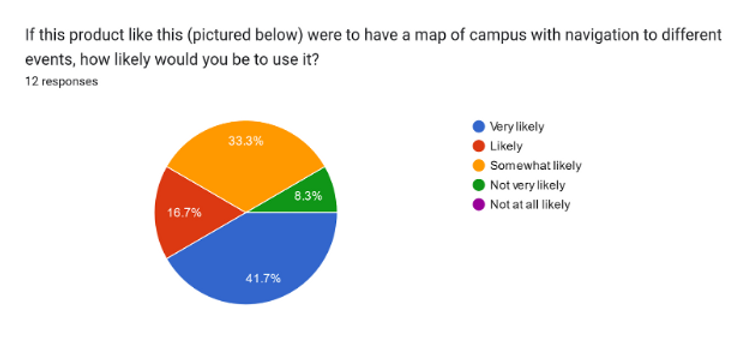
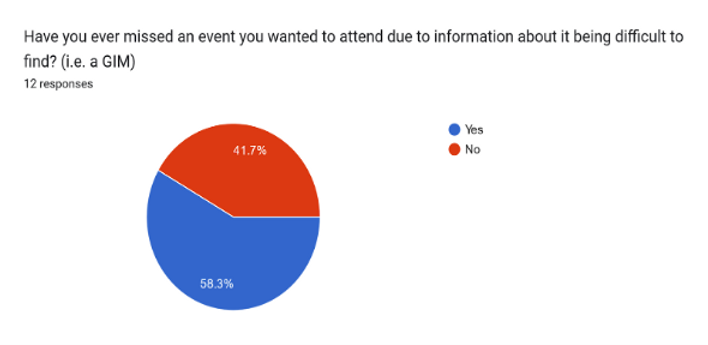
Bibliography
Yamamura, Erica K. Place-Based Community Engagement in Higher Education: A Strategy to Transform Universities and Communities. First edition., Taylor & Francis, 2018, https://doi.org/10.4324/9781003446323.
Zhou, Joyce, et al. “Impact of Community Engagement on Students’ College Experience.” Journal of Higher Education Theory and Practice, vol. 22, no. 7, 2022, pp. 1–10, https://doi.org/10.33423/jhetp.v22i7.5265.
Personas
Personas are archetypes that describe the various goals and observed behavior patterns among our potential users and customers. They help us as designers to refine our ideas and enrich the content of our product. Each designer created a persona that we may base our design choices off.

Persona 1
Jane Barley: A Junior Studio Art major looking to foster connections in the community before she goes to graduate school, hopefully in the area. She has trouble making it to events due to transportation and is looking for an easier and less anxiety-inducing way to go to events. She is too busy to look through all of the events and finds it so overwhelming and hard to keep track of everything.

Persona 2
Juliana Silva: Juliana is a freshman at the University of Rochester, majoring in biology. She is 18 years old and is from a suburban town where she is used to having her car. Juliana has been busy since moving on campus and is struggling to find events that fit her interests, which also fit within her schedule and match her means of transportation. The CCC app confuses her and she has missed several GIMs that she would have attended simply because she didn’t know about them.

Persona 3
Dani is a University of Rochester student from Los Altos, California, with Hong Kong immigrant parents. He's majoring in Psychology with an Economics minor. Dani struggles with forming deep connections despite having acquaintances. His hobbies include video games, listening to J-pop, cooking, and learning Mandarin. Dani is interested in sports like badminton, soccer, and basketball but finds it challenging to join casual games. His reserved nature makes it difficult to make new friends, but he's actively seeking ways to engage more with his campus community and expand his social circle.

Persona 4
A Freshman majoring in Economics. She has a very busy schedule and finds it quite hard to keep track of events and actually find the time to go to them. When she does have free time, she is not sure what to do with it, and often just ends up on social media rather than enjoying club activities. Emma struggles a lot finding information about events she is interested in, and this combined with everything else makes it very difficult to enjoy activities at U of R and the surrounding community. As a Freshman she is very open to meeting people and trying new things, but she has no idea how to align events with her schedule.

Process

Process
We want to help as many people as possible and attract people to use our program/participate in activities of interest to our users.
Some of the more important changes to our product were:
Persona: the elements needed to think about and refine the product from different perspectives. Gives us a general idea and conceptualization of what we want to do with the project.
Surveys and interviews: to find information to improve our program and to let us know what our customers want. This also allows us to refine our project with more ideas and creativity.
STAKEHOLDER: Improve the idea. Find out what the market wants from us. This made us think about price and time and come up with solutions. This is what determined what our final product would look like.











Execution
Stakeholders
Paul LeCerc:As the dean of students, Dr. LeClerc handles all allocation of funding for affairs that affect the comfort and enjoyment of the general student body. He wants to increased Participation in campus activities,enhanced campus appeal for prospective students and centralized information hub.
Jeffrey: He is the Student Life Operations and Director as part of the Wilson Commons Student Activities department at U of R. He is committed to giving U of R students the best student community possible, and hopes to foster an engaged, tight-knit, and vibrant student culture. He is empathetic to student goals/projects, but is also a very practical and realistic person.
Cheryl Barry : She has been the Director of Academic & Community Programs at the Memorial Arts Gallery for the past 20 years. She has a very deep appreciation for her community and is constantly committed to building more connections within the greater Rochester area. Cheryl herself is not a common investor in products, but she has the money to be, and she has been looking for a way to support further connection within the Rochester community.
Dr. Clara Matthews has worked at the University of Rochester for 15 years, leading student affairs, wellness services, and campus events. She is dedicated to improving the student experience through diverse activities and resources, with a
particular focus on helping international students and freshmen adapt to campus life. She is one of the main decision-makers for student life, managing and coordinating resources from various departments to enhance student engagement.
Ryan: He is a student at the University of Rochester, active in student government. He has knowledge of events happening in the community and on campus. He is an event organizer. He is in the student government. Being able to get support from the outreach department. He wants more participation in the event and is hoped for and encouraged.
Funding & Investors
Overall, our products have good prospects for development with a budget of $15,000. But at the same time we have certain problems to solve. During the meeting, our investors raised questions about the timing and cost of our product. After our discussion, we canceled the touch screen. The focus was put on swiping the card with the campus card and viewing the details on the cell phone. This saves time and reduces costs.
We will talk about placing the product in high traffic areas, such as library areas. This will make it easier for students to view and use. We also hope to attract more people to use our products in such places.
Cost Breakdown
With a budget of $15,000 we had to approach and allocate our costs carefully. We did so as follows:
Bulletin Board: $80
Card Reader: $15
Receipt/Ticket Printer: $30
Laser Photo Printer: $300
Wires: $10
Wire Protector: $9
Tacks: $2 for 100
Plastic Case for border and stand: $80
Total: $526
Materials:
Printer paper: $40 for 4,000 sheets → $80 per month → $700 per year months U of R is in session
Toner: $80 per year
Tickets: $9 per 200 tickets → $120 per year
Total: $900
We are only concerned with one year after our original production in terms of expenditures.
Per year the general upkeep includes: $80 for toner, $700 for paper, $120 for tickets.
People:
3 total Front-End & Back-End software engineers. $22/hour, 40 hours each: $2640
1 UI/UX Engineer, $15/hour, 50 hours, $1100
2 Hardware engineers to put together the device: $30/hour, 15 hours, $900
5 general product oversight designers, $1750 each: $8,750
Total: $13,390
Our Team.

